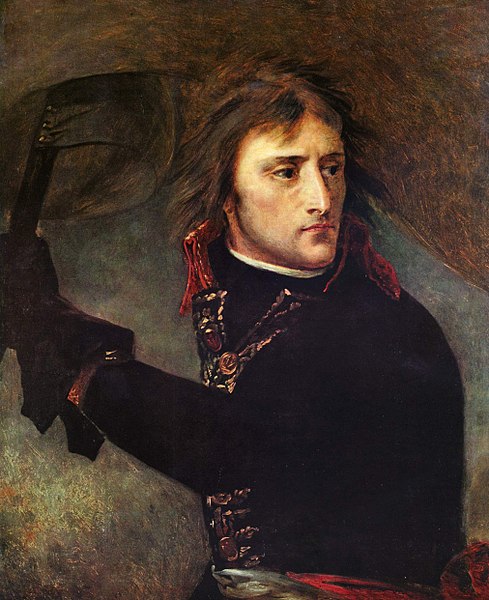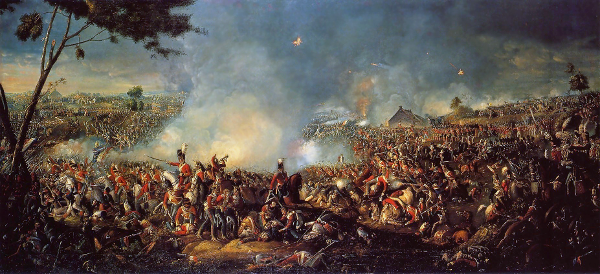A few weeks ago, the Risk Awareness online summit brought together some of the brightest minds in risk management, decision making, quantitative risk analysis, IT security, and more. You may recognize a couple of the speakers from the summit since I refer to them often.
Many of the speakers though were new, even to me, perhaps because many of the presenters and even the summit organizer are based in Europe. Fortunately, since the summit was held online, I didn’t have to watch the sessions live…
Although all of the summit’s topics were interesting, there was one in particular that jumped out at me, possibly because I have always had an interest in English and European nobility.
Jacinthe Galpin, creator, author, and producer of the Risktory Podcast, analyses historical figures and events from a risk perspective. On her homepage, she mentions how risk management has always played a role in human affairs, both to protect against threats and to exploit opportunity.
Her session at Risk Awareness Week focused on a particularly eccentric historical figure, Napoleon Bonaparte of France. In her 30-minute session, Jacinthe used Napoleon’s story to show us what both good and bad risk decision-making looks like.
Throughout his life, Napoleon’s actions served as the perfect example of what to do and what not to do when it comes to risk.
In the late 18th century, France was a country in turmoil. The French people had grown weary of the monarchy and the poor economic conditions for which they blamed King Louis XVI. This turmoil and the resulting power vacuum presented opportunity to Napoleon, who by all accounts, was a shrewd opportunist in his quest for power.
By understanding his environment and planning a strategy that gave him the greatest chance of success, Napoleon was able to disperse a loyalist insurrection in 1795. He was keenly aware of the opportunity of how being on the winning side would benefit him in his quest for power. But, he also understood the threat of losing and how it would result in a damaged reputation among revolutionaries and loyalists alike. It’s likely that Napoleon carefully analyzed possible scenarios to develop the best strategy to further his goals.
In successfully dispersing the insurrection, Napoleon became a hero to everyday French citizens looking for change and tired of the bloodshed.
But to rise to the top, Napoleon understood that he needed to “build strength through lines of defense,” or put another way, good “threat dilution.” Therefore, in 1796, he married Josephine de Beauharnais, a wealthy widow who lost her first husband in the Revolution. Although Napoleon and Josephine seemed to share a mutual love for one another, Napoleon also understood her money and connections would be an advantage for him.
That same year, during the Italian campaign, Napoleon’s army was vastly outnumbered. He knew traditional military strategy was not going to work, so he instead opted to use risky guerilla tactics.
By setting tone and expectations with his people, articulating an appetite for risk, and leading from the front, Napoleon’s disruptive strategies were wildly successful in both the Italian campaign and the Battle of the Pyramids two years later.
Poor outcomes from battles in late 1798 and 1799 are the first indications Napoleon was losing his acumen for risk, despite later becoming Emperor of France.
The Battle of the Nile in August 1798 is considered to be Napoleon’s first big mistake. After a British admiral captured and burned his ships, Napoleon locked himself in a Cairo palace. He “quit learning from the past in order to direct the future” and started making impulsive and emotion-based decisions.
Prioritizing personal gain over leadership, integrity, and trust, Napoleon abandoned his sick and exhausted troops during the Syrian campaign in August 1799 and returned to France alone.
Later that year though, Napoleon bounced back and achieved success in a second Italian campaign, culminating in the signing of a peace treaty with the British.
In 1802, Napoleon was named First Consul by the new French Constitution, and from there embarked on significant reforms. The Napoleonic code in fact forms the basis of France’s civil law to this day.
In hindsight though, Napoleon seemed to thrive as the underdog where he didn’t have to abide by traditional rules. Becoming Emperor shifted his mindset and Napoleon began ignoring threats and only pursued opportunities.
He believed, wrongly, that opportunity alone could make threats irrelevant.
It was becoming clear that Napoleon had lost his ability to manage threats and could not weigh threats and opportunities and develop a solution. His risk-based decision-making process was crumbling because his mindset changed. He started believing that he was invincible because of his position. The reality is that the higher the position, the bigger the fall, which is exactly what Napoleon experienced.
In the Russian campaign in 1812, his failure to establish new controls and treatments resulted in one-third of his army losing their lives to hunger and disease. By 1814, Napoleon was deposed as Emperor and replaced by Louis XVIII, who was extremely unpopular in his own right.
Back in the underdog seat, Napoleon re-ascended to position of Emperor the next year, but this did not sit well with other European powers.
The Battle of Waterloo in 1815 between Britain and Prussia on one side and France on the other was the last hurrah for Napoleon. By now, both armies had come to understand Napoleon’s way of thinking and were able to anticipate his moves and decisions. Napoleon failed to see this and did not understand his new environment. This, coupled with his inability to adapt, led to his capture by the British.
He spent the remaining few years of his life as a prisoner on the island of St. Helena in the South Atlantic, where he died at the age of 51.
Despite Napoleon’s historical reputation as a shrewd opportunist, his story is a fascinating example of both good and bad risk decision-making. In the end, Napoleon did not understand that good risk management is, in fact, a balancing act between threats and opportunities.
Napoleon’s story reminds me of a quote from the book Decision Quality: Value Creation from Better Business Decisions: “You can have a good outcome, but that doesn’t mean the decision-making process was good.”
You have to ensure that your decision-making processes are solid, take into account both threats and opportunities to your objective, and take a hard look at the scenarios before you. Only then can you make a true risk-based decision to support your organization’s performance.
What are other examples of both good and bad risk decision-making you have encountered?
Please do not hesitate to share your thoughts below or join the conversation on LinkedIn.
Jacinthe’s session was a fascinating historical example of both good and bad risk management. I want to say thank you to her and the event organizer…
And if you or executives are struggling to balance threats and opportunities and make risk-informed decisions, please contact me today to discuss your organization’s specific situation.









